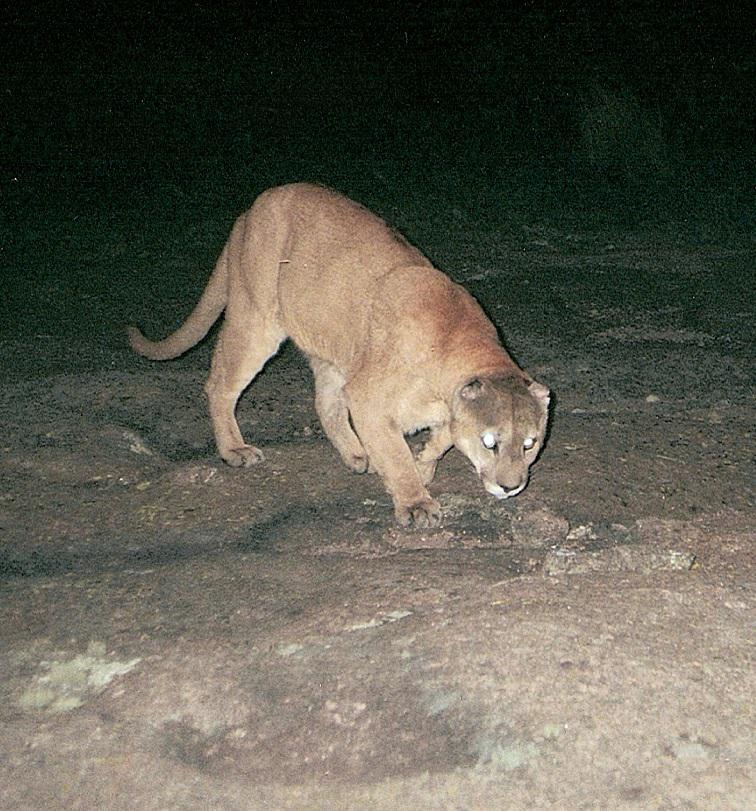Monica Valeria Pia
Other projects
The main aim of this work is to evaluate the response of top predator density (puma, Puma concolor and endemic culpeo foxes, Pseudalopex culpaeus smithersi) to changes in environmental and anthropic characteristics in two areas with different degrees of conservation status, and in turn to relate predator density with livestock depredation levels.

Puma (Puma concolor).
Populations of large carnivores are declining globally for a variety of reasons, but the most important threat to the conservation of large carnivores is that they frequently are in conflict with humans. Argentina has a large proportion of its territory in rangelands and the main livestock predators, particularly in the south, centre, and west of the country are the puma (Puma concolor) and the coyote-sized culpeo fox (Pseudalopex culpaeus). Widespread declines of native prey have made livestock a common prey of these predators, and conflict is pronounced in the periphery of protected areas where carnivores are abundant and livestock husbandry is widespread. Large carnivores are not even safe inside protected areas, particularly when these are small, as their large area requirements frequently bring them in contact with humans when they approach the periphery of these areas, and these humans often blame protected areas for being sources of conflict animals.
Livestock predation by carnivores not only depends on human proximity to the parks, but also on environmental factors which must play an important role in the populations and behaviour of the predators. We propose to determine in this study, as basic and essential information for conservation efforts, to determine the way that related environmental and human factors affect top predator density inside and outside protected areas. The main aim of my work is to evaluate the response of top predator density (puma, Puma concolor and endemic culpeo foxes, Pseudalopex culpaeus smithersi) to changes in environmental and anthropic characteristics in two areas with different degrees of conservation status, and in turn to relate predator density with livestock depredation levels.
I will test the following hypotheses:
1) In the Park, relative density of predators will be higher due to the recovery of the natural environment with livestock exclusion;
2) habitat efficiency for top predators will be higher in the Park than in surrounding areas due to favourable environmental conditions with a minor degree of alteration;
3) anthropic activity and human settlements negatively affect the top predators’ density in Pampa de Achala.
This study will fortify the knowledge of top predators’ biology, and will contemplate several aspects: a study of top predators’ relative density evaluating whether they are affected or not by environmental or anthropic characteristics, and, this study will help us to determine if these characteristics affect indirectly the livestock predation levels.